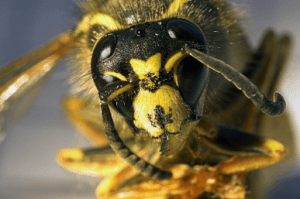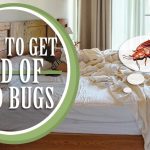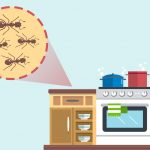
Florida is one of the top tourist spots in the US and probably the most populated, especially in summer. With its beaches, who would say no to Florida. But before you pick up your car keys and luggage, you might want to know that the state has dangerous animals and bugs that may endanger your life.
We have listed the top 10 dangerous bugs in Florida and what to do when you encounter them.
Quick Overview
- Killer Bees
- Buck Moth Caterpillar
- Flannel Moth Caterpillar
- Fir Tussock Moth Caterpillar
- Eastern Yellow Jacket
- The Black Saltmarsh Mosquito
- Black Widow Spider
- Fiddleback spider
- Hag caterpillar
- Ants
Killer Bees
Yes, killer bees are in Florida. A killer bee sting can cause redness, swelling, and irritation. But if you are allergic to a bee sting, it could be fatal as it can trigger an allergic reaction when bees sting you in multiple places at once.
March to July is the killer bees swarming season. Contrary to famous beliefs, killer bees are not aggressive. They only attack because they would like to protect their nest. They build their nest in abandoned places and sheds, empty containers, and such. Typically, all these places have one factor in common: no people. Avoid going too dark alleys and abandoned spaces as you might encounter angry bees. If you saw a bee flying back and forth near you, it means back off. You are too close to its territory, and it is trying to defend it. Do not try to swat the bee. Instead, slowly walk backward away from it. If in case it stings, cover your nose and mouth and run as fast as you can. Do not wait for the bee’s backup to arrive. Go to the nearest hospital to have the sting checked.
Buck Moth Caterpillar
The buck moth caterpillars are one of the feared bugs in Florida. They live in oak forests since they feed on various oak species. The buck moth caterpillar usually emerges during the spring season. What makes them dangerous is the poison-laced into its stinger, covering the whole body. If you are stung, you will have symptoms of itching, swelling, nausea, and allergic reaction. If a buck moth caterpillar crawls into you, do not remove it with your hands as the stingers will get into your fingers and spread to other parts of your body.
Flannel Moth Caterpillar
Flannel Moth Caterpillar is another dangerous bug in Florida. The caterpillar is white but gets darker as it gets old. The sting from this caterpillar causes itching, redness, swelling, and allergic reaction. There are times wherein the allergic reaction is too much, and the victim needed immediate medical attention. Flannel moth caterpillars are in oak forests.
Fir Tussock Moth Caterpillar
The Fir Tussock Moth is another species that you need to avoid when you are in Florida. You are most vulnerable to them when they drop from the host tree and search for a place to build their cocoon. The stingers will cause dermatitis and allergic reaction. If you have one drop on you, do not remove the caterpillar with your hands. The itching and swelling stop after a few days, but if you are experiencing difficulty of breathing, seek medical assistance.
Eastern Yellow Jacket
Eastern Yellow Jacket is another dangerous bug in Florida. It is one of the species of wasp found in Florida. They are aggressive have a powerful sting. They are pests in many states as they love to build nests in buildings where there are human populations. Wasp stings are not life-threatening in most cases, but it is best to seek medical assistance if you feel nausea, vomiting, or shortness of breath.
The Black Saltmarsh Mosquito
The black salt marsh mosquito is a native of the Florida coast. They are part of the Aedes species of mosquitoes known for their black and white bands around its body. The black saltmarsh mosquito lay their eggs in murky marshes but travel to where people are. They carry viruses, including the West Nile Virus and Venezuelan encephalitis. The US has spent millions to help control this bug.
Black Widow Spider
Black widow spiders have venom that causes pain, nausea, and vomiting. There have been cases of death as well. Since black widow spiders are poisonous, seek medical assistance immediately if bitten. Black widow spiders have a black body and a prominent red mark in the center of their stomach.
Fiddleback spider
Another small and yet dangerous bug in Florida to avoid is the Fiddleback spider. They are small and brown and resides in woodpiles or debris. The bite from these spiders is painful. The bitten area is black with red rings around it. The common symptoms are fever and chills, nausea, and vomiting. Seek medical assistance if you think the wound is infected and if symptoms worsen.
Hag caterpillar
The hag caterpillar is considered one of the top 10 dangerous bugs in Florida. It has a distinct physical appearance, with its nine pairs of legs covered in stinging hairs. It looks like the shed skin of a spider due to its legs. People react differently to its venomous sting. Some are resistant and only show experience itchiness and swelling, but some needed medical attention. If you bumped into the hag caterpillar, remove the stinging hair with tape. Seek medical assistance if you experience pain and excessive swelling.
Different Types of Ants
Ants are dangerous insects and hard to control as well. And although they are not poisonous, they can wreak havoc to anyone unlucky enough to step into their territory. With their number combine, you are in danger if you get it their way. There are many species and subspecies of ants that are dangerous in Florida. The first line of defense is knowing where to find them and steer clear of them entirely.
If you are visiting Florida, it is best to equip yourself with knowledge of their dangerous animals and bugs. Locals have been battling with them over the years now, so they know what to expect. But if you are new to the place, be extra careful. As they say, prevention is better than cure.


